Introduction
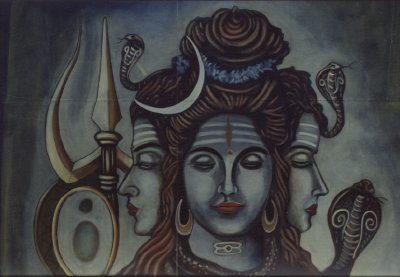 Mṛtyuṅjaya literally means ‘Victory over Death’ and Mahā-mṛtyuṅjaya mantra is also called- Mahā-mokṣa mantra as it gives the ultimate enlightenment. Received by Maharṣi Vasiṣṭha and enshrined as a hymn of the Ṛk Veda, it has been sung for thousands of years by the pious who seek penultimate victory over this mṛtyu-loka (earthly plane where death is the only surety).
Mṛtyuṅjaya literally means ‘Victory over Death’ and Mahā-mṛtyuṅjaya mantra is also called- Mahā-mokṣa mantra as it gives the ultimate enlightenment. Received by Maharṣi Vasiṣṭha and enshrined as a hymn of the Ṛk Veda, it has been sung for thousands of years by the pious who seek penultimate victory over this mṛtyu-loka (earthly plane where death is the only surety).
Mṛtyuṅjaya mantra
anuṣṭubh chandas – 32 syllables = 4 pada (4×8=32)
उर्वारुकमिव बन्धनान् मृत्योर्मूक्षीय मामृतात्॥
trayaṁbakkaṁ yajāmahe sugandhiṁ puṣṭivardhanam|
urvārukamiva bandhanān mṛtyormūkṣīya māmṛtāt ||
There are many mantra for warding off evils like death and other suffering given in the sacred literature of the Hindu’s. These mantra are of various types but the Mṛtyuṅjaya mantra has been extolled in sacred literature as being the best. This mantra is addressed to Lord Shiva and is taught in the Rig Veda (7 mandala 59 Chapter) as well as the Yajur Veda (3-60) showing that it is a śruti having been received by Mahārishi Vasiṣṭha, the Kula Guru of Bhagavān Sri Rāma Chandra. This Mahā-mṛtyuṅjaya mantra is from the Rig-Veda (7th Book or Mandala, 59 Chapter) and needs initiation for attaining siddhi. Anybody can recite this mantra and attain good health, release from bondage and other problems. This is the greatest panacea for all evils and can be recited at any time like any other Mahā-mantra.
Śukrācārya’s Penance & teaching
Jyotish teaching
The Mahā-mṛtyuṅjaya mantra was taught by Lord Shiva to Śukrācārya the preceptor of the demons after he succeeded in the impossible test of hanging upside down from a tree for twenty years (Vimśottari daśā period) with smoke blowing into him from a fire lit beneath. Even Bṛhaspati was shocked at the prospect of such a terrible penance and calmly settled to observe Śukrācārya accept the challenge of Indra and succeed.
Tapasvi Yoga definition
Since Śukrācārya (Venus in astrology) passed the penance he was glorified as the Tapasvi Raja (the king of the spiritual discipline and penance). The definition of Tapasvi Yoga comes from this penance as Saturn (punishment, hard toil), Ketu (smoke blown into the nose and other forms of self-inflicted torture) and Venus (desire and its renunciation) must come together to define the personal ability of the Tapasvi.
After the penance, Lord Shiva taught the Mahāmṛtyuṅjaya mantra to Śukrācārya, who under very compelling circumstances had to teach this to the son of Brihaspati and that is how the devas also got the mantra. This mantra was given (śruti) to Vasiṣṭha Maharṣi for the welfare of this world. The mantra and explanation given by Śukrācārya to Ṛṣi Dadhicha when the latter’s body was cut and thrown by Raja Kṣuva, is recorded in the Shiva Purāṇa.
Mantra Pada
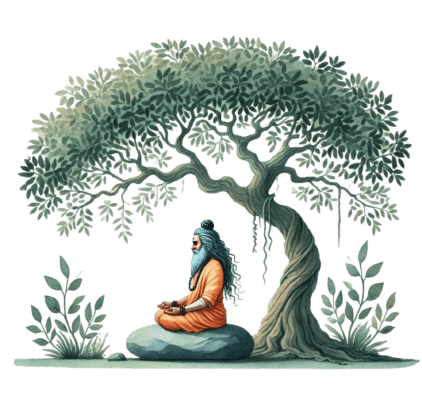 Śukrācārya said “O! Dadhicha, I pray to Lord Shiva and give you the upadeśa (advise, wisdom, teaching) of the highest Mahā Mṛtyuṅjaya mantra.” The mantra is in Anuṣṭubh Chandas and accordingly, is divided into four padas composed of eight syllables each.
Śukrācārya said “O! Dadhicha, I pray to Lord Shiva and give you the upadeśa (advise, wisdom, teaching) of the highest Mahā Mṛtyuṅjaya mantra.” The mantra is in Anuṣṭubh Chandas and accordingly, is divided into four padas composed of eight syllables each.
Śukrācārya said “The first pada is त्रयंबक्कं यजामहे (trayaṁbakkaṁ yajāmahe) and means – we worship or sing the praise of Lord Tryaṁbakka. Tryaṁbakka is the name of Lord Shiva as the father of the three worlds – bhū, bhuva and svarga lokas. He is the father and lord of the three mandala’s – Surya, Soma and Agni mandala. He is Maheśvara, the lord of the three guṇa’s – Sattva, Rajas and Tamas. He is Sadāśiva, the teacher of the three tattva – Ātmā tattva, Vidyā tattva and Shiva tattva. He is the father (cause and source) of the three energies (agni) – āvāhaniya, garhapatya and dakṣināgni. He is the father of all physical creation through the three mūrti bhūta – Pṛthvi (solid), Jala (liquid) and Tejas or agni (energy). He is the lord of the three heavens created by the dominance of the three Guṇa – Rajas (Brahma), Sattva (Vishnu) and Tamas (Shiva). Know Him to be the nirākāra (formless) Sadāśiva as He is above this physical mode and is their Maheśvara. This is the first foot of the mantra (composed of eight syllables).”
“The second pada of the mantra,” continued Śukrācārya, “is सुगन्धिं पुष्टिवर्धनम् (sugandhiṁ puṣṭivardhanam). Sugandhim refers to the fragrance of the flower that spreads in all directions, and in a similar way Shiva is present in the entire creation, both animate and inanimate. In all the bhutas (modes of existence), in the three Guṇa (nature of creation as being Satva, Rajas or Tamas), in the ten indriya (five jñāna-indriya or senses and five karma-indriya or organs of action), in all the devas (33 devas are the source of all illumination and enlightenment) and the ganas (hosts of demi-gods), Shiva exists and pervades as the illumine ātmā (soul) and is their essence. Pustivardhanam is now being explained. That inward dwelling spirit (atman), the Puruṣa Shiva is the real sustainer of Prākṛti (and not vice-versa as all people perceive). Starting with the Mahātattva (primordial state of matter/energy) to the individual parts of creation, the entire sustenance of the physically created beings (both animate and inanimate) is done by the imperishable Puruṣa. You, I, Brahma, Vishnu, the Munis and even Indra & devas are maintained/sustained (by the ātmā and that is Him). Since the Puruṣa (ātmā – Shiva) is the granter of sustenance to prākṛti (body/nature), he is ‘Pusti-vardhana’.”
Having explained the first two pada of the mantra, Śukrācārya continued to explain the remaining two pada. He said “the next two pada उर्वारुहमिव बन्धनान् मृत्योर्मूक्षीय मामृतात्॥ urvāruhamiva bandhanān mṛtyormūkṣīya māmṛtāt || (consisting of sixteen syllables) is meaning – Prabhu! just as the ripe cucumber is severed from the bondage of the creeper, in the same manner may we be delivered from death for the sake of immortality (moksha). Rudra deva is like amṛta (nectar of immortality). Those who worship Him with good karma, penance and repentance, meditation, contemplation, prayer or praise, will surely renewed life and vigour. The strength of truth force (in this mantra) is such that Lord Shiva shall definitely free the worshipper from the bondage of death because Shiva alone is the giver of bondage and moksha.
This is the Mṛtasaṅjīvani mantra and has the power to give back life and rescue from death and great evils. You should adore Lord Shiva and recite this mantra. Water sanctified with this mantra should be drunk all the time. [Authors note: It is well known that the rudrākṣa bead is placed in a glass of water after being held in the palm during the recitation of the mantra. this water is drunk during the day.]
Oblations in the sacrificial fire with this mantra is very purifying. “Now I shall teach the dhyāna for the mantra.” Saying so, Śukrācārya started reciting the śloka for meditating on Lord Shiva.
Mṛtyuṅjaya Meditation
Dhyāna
The dhyāna taught by Śukrācārya (Siva Purāṇa) is given below. There are other dhyāna given in other texts and these are being quoted at relevant places to the extent necessary. This is to be recited once before meditating on Śrī Mṛtyuṅjaya Śiva.
सिञ्चन्तं करयोर्युगेन दधतं स्वाङ्के सकुम्भौ करौ।
अक्षस्त्रङ्मृगहस्तमम्बुजगतं मूर्धस्थचन्द्रस्त्रवत्
पीयूषार्द्रतनुं भजे सगिरिजं त्र्यक्षं मृत्युङ्जयम्॥
hastāmbhojayugasthakumbhayugalādudghṛtya toyaṁ śiraḥ
siñcantaṁ karayoryugena dadhataṁ svāṅke sakumbhau karau|
akṣastraṅmṛgahastamambujagataṁ mūrdhasthacandrastravat
pīyūṣārdratanuṁ bhaje sagirijaṁ tryakṣaṁ mṛtyuṅjayam||
Translation: We praise (meditate) on the eight-armed, three-eyed Lord Mṛtyuṅjaya. He sits cross legged on a lotus (padmāsana). He holds two Kumbha (water vessels) with two lower arms and uses two upper arms to sprinkle water on His own head. The two other lower-most arms hold the auspicious kalaśa on the center of the legs. The remaining two hands hold a rudrākṣa-mālā and mṛga mudra (yogic hand postures). The amrita (nectar) dripping from the crescent moon on His head has made His whole body wet. The daughter of the mountain king (Himāvat ~ Himalaya) is seated next to Him.
Explanation: The eight arms represent the eight directions of the zodiac called kālachakra. With each of these arms Lord Mṛtyuṅjaya protects the worshipper from the evil hands of fate and time. The three eyes show his omniscience, the all-knowing Śiva. Sun is His right eye that defines righteousness and truth (dharma). Moon is his left eye of attachment and emotion whose opening is the joy of the world and whose closing is their sorrow. Agni is third eye of omniscience which is the brāhmaṇa guru, the highest parameṣṭhi guru, the all-knowing eye of supreme wisdom and knowledge. Kalaśa is the pot containing water from five rivers, with five leaves (pañca pallava) representing Viṣṇu and Varuṇa. The water sprinkled on His head drops through the crescent Moon to become Soma which is the nectar of life and it wets his body. This is symbolic of the rudra-abhiṣeka ritual of anointing, consecrating by sprinkling water and other liquids on the Śiva-liñga.
In jyotiṣa, the Sun represents Lord Śiva in all signs and is the giver of life. The abhiṣeka ritual is a prayer for rain as the Sun draws the water from the oceans by its mighty rays and pours it down blessing the lands and rivers and bringing life on earth. This single constant action of Lord Mṛtyuṅjaya sustains life on this planet and rudrābhiṣeka is symbolic of rainfall that sprinkles water on the ground making it life sustaining. Rain occurs when the heavy rain clouds are forced to cooler heights by high mountains and other currents. This is the śaktī (power) of Pārvatī, the constant consort of Lord Śiva, who is referred to in this dhyāna as the daughter of Himāvat, the Himalayan king-god.
Nyāsa
कहोल ऋषये नमः। शिरसि
kahola ṛṣaye namaḥ| śirasi
गायत्री छन्दसे नमः। मुखे
gāyatrī chandase namaḥ| mukhe
श्री मृत्युन्जय देवतायै नमः। हृदि
śrī mṛtyunjaya devatāyai namaḥ| hṛdi
जुं बीजय नमः। गुह्ये
juṁ bījaya namaḥ| guhye
ह्रीं शक्तये नमः। पादयो
hrīṁ śaktaye namaḥ| pādayo
Dhyāna Bīja mantra
Mṛtyuṅjaya bīja, the seed of rejuvenation is actually the jīva bīja (seed of life which brings all living beings) is जुं (juṁ). It is formed from the starting syllable of the word जीव (jīva) which is ज (ja). This bīja was taught originally by Lord Śiva to Bṛhaspati, due to which Bṛhaspati became the preceptor of the gods and due to which he was able to save Indra from definite destruction at the hands of Lord Śiva. Pleased with his dedication and well-meaning disposition, Lord Śiva blessed Bṛhaspati to be known as जीव (jīva) by which he shall signify the very existence of life and by whose presence, the god of death Yama will have to turn away. This power of Bṛhaspati has been explained in the Mahā Nārāyaṇa Upaniṣad. In the Kāla-Chakra Bṛhaspati becomes Śrī Jīva and sits in the southern direction, which is the path of Yama, thereby blocking death from happening. So long as Śrī Jīva sits in his southern direction, the being shall live. Thus, the mṛtyuṅjaya bīja जुं (juṁ) simply means Jīva Upadeśa.
The Bīja mantra was obtained by Kahola-ṛṣi; the mantra is in Gāyatrī chandas; the mantra devatā (deity) is Sri Mṛtyuṅjaya (form of Shiva). This mantra is to be used for meditation and at all times for protection from all evils. Bīja means seed and unless this seed is panted properly in the heart how can you expect the tree of bhakti to Lord Śiva to grow? It is imperative that meditation be done with this bīja mantra.
om juṁ saḥ
Meditate with this mantra repeating it very quietly in the mind. Bring the mind to focus on the feet and recite the monosyllable ॐ (om). Then the bīja जुं (juṁ) has to be placed in the heart chakra. Finally the sahasrara chara on top of the head is brought into metal focus with the seed syllable सः (saḥ).
Understanding the Mahā Mṛtyuṅjaya Mantra
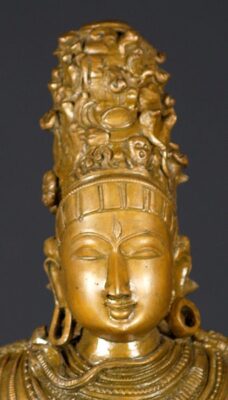 It is important to understand the meaning of the words as this makes the repetition meaningful and brings forth the results.
It is important to understand the meaning of the words as this makes the repetition meaningful and brings forth the results.
OM is not spelt out in the Rig-Veda, but has to be added to the beginning of all Mantras as given in an earlier Mantra of the Rig-Veda addressed to Ganapati. This Mantra is given in the prayer page of my Book “Mahārishi Jaimini’s Upadesa Sutra”.
TRAYAṀBAKKAṀ refers to the Three eyes of Lord Shiva. ‘Trya’ means ‘Three’ and ‘Ambakam’ means eyes. These three eyes or sources of enlightenment are the Trimūrti or three primary deities, namely Brahma, Vishnu and Shiva and the three ‘AMBA’ (also meaning Mother or Shakti’ are Sarasvatī, Lakshmi and Gouri. Thus in this word, we are referring to God as Omniscient (Brahma), Omnipresent (Vishnu) and Omnipotent (Shiva). This is the wisdom of Bṛhaspati and is referred to as Śrī Dattātreya having three heads of Brahma, Vishnu and Shiva.
YAJĀMAHE means, “We sing Thy praise”.
SUGANDHIṀ refers to His fragrance (of knowledge, presence and strength i.e. three aspects) as being the best and always spreading around. Fragrance refers to the joy that we get on knowing, seeing or feeling His virtuous deeds.
PUṢṬIVARDHANAM: Pooshan refers to Him as the sustainer of this world and in this manner, He is the Father (Pater) of all. Pooshan is also the inner impeller of all knowledge and is thus Savitur or the Sun and also symbolizes Brahma the Omniscient Creator. In this manner He is also the Father (Genitor) of all.
URVĀRUHAMIVA: ‘URVA’ means “VISHAL” or big and powerful or deadly. ‘AAROOKAM’ means ‘Disease’. Thus URVAROOKA means deadly and overpowering diseases. (The CUCUMBER interpretation given in various places is also correct for the word URVAROOKAM). The diseases are also of three kinds caused by the influence (in the negative) of the three Guna’s and are ignorance (Avidya etc), falsehood (Asat etc as even though Vishnu is everywhere, we fail to perceive Him and are guided by our sight and other senses) and weaknesses (Shadripu etc. a constraint of this physical body and Shiva is all powerful).
BANDHANĀN means bound down. Thus read with URVAROOKAMEVA, it means ‘I am bound down by deadly and overpowering diseases’.
MṚTYORMŪKṢĪYA means to deliver us from death (both premature death in this Physical world and from the neverending cycle of deaths due to re-birth) for the sake of Mokshya (Nirvana or final emancipation from re-birth).
MĀMṚTĀT means ‘please give me (mā) some amṛta (life rejuvinating nectar). Read with the previous word, it means that we are praying for some ‘amṛta’ to get out of the death inflicting diseases as well as the cycle of re-birth.
Steps in Mantra Siddhi
Bṛhaspati Gāyatrī
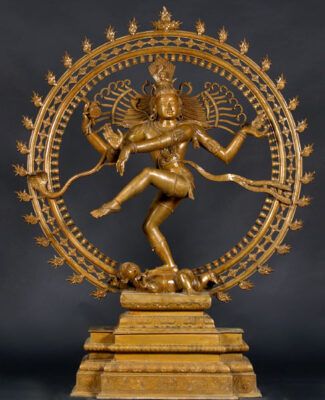 I will advise its recitation for forty days both in the morning and evening, after lighting a lamp and sitting in any yogic posture (preferably padmāsana which is the picture of Lord Śiva in the picture) while facing east. Recite the Mahā-mantra 108 times (one rosary) or its multiples in each sitting. This is the greatest work of Maharishi Vasiṣṭha. Before commencing the mṛtyuṅjaya mantra recite the following small prayer to the everlasting spirit of the Maharṣi for his blessings and guidance.
I will advise its recitation for forty days both in the morning and evening, after lighting a lamp and sitting in any yogic posture (preferably padmāsana which is the picture of Lord Śiva in the picture) while facing east. Recite the Mahā-mantra 108 times (one rosary) or its multiples in each sitting. This is the greatest work of Maharishi Vasiṣṭha. Before commencing the mṛtyuṅjaya mantra recite the following small prayer to the everlasting spirit of the Maharṣi for his blessings and guidance.
śucimarkairbṛhaspatimadhvareṣu namasyata| anāmyoja ācake|| Rig Veda III.62.
Translation: We pray to Bṛhaspati (the Lord of this Universe and the teacher of this Vedic Knowledge), whose wishes are inviolable, for good thoughts (that will lead to good speech and actions that cannot be violated as it will be the truth).
Rishi-adi Nyasa
The preparatory rites should be learnt from any book on Karma-kāṇḍa (pujā method). However we give the simplest method of reciting this mantra to overcome the greatest of evils. Nyasa is the method of protecting the self by placing the parts of the mantra on five body parts. These body parts are the crucial centres for the spiritual energy.
- Mantra Ṛṣi is the Guru, the teacher of the mantra and to who the mantra was revealed for the first time for the benefit of the world – siras (head). In this case the Ṛṣi is Maharṣi Vasiṣṭha.
- Chandas (meter, which is technically very specific for each mantra) – mukha (mouth). This vedic mantra is in anuṣṭubh chandas. This is a metre having four pada (feet) of 8 phonemes each making the entire Anuṣṭubh meter as composed of 32 (8 x 4 = 32) syllables. It maybe noted that any change in the metre shall cause a distortion in the chandas and the mantra vibration shall be ruined.
- Devatā (the deity of the mantra) – hṛdaya (heart). In this case the devatā is Lord Shiva addressed as “Śrī Tryaṁbakkeśvara Mṛtyuṅjaya devatā”, the jyotirliñga.
- Bīja (the seed syllable that created the mantra and contains the mantra within itself, like the seed that creates the tree) – Liñga (sexual organ). There are some opinion on this, but the most appropriate one is given by Vāmadeva Ṛṣi as हौं (hauṁ).
- Shakti (the physical power of the mantra like the mother) – pada (feet). It is the giver of gati or direction. In this case the śaktī is Devī Aṁṛteśvarī, addressed as ह्रीं (hrīṁ).
This portion is only for those who have received instructions for mantra upāsana and know about nyāsa. They can easily determine the five (or six) mantras for ṛṣi-adi nyāsa, añga-nyāsa etc.
Sadāśiva mantra nyāsa
| वामदेव ऋषये नमः। शिरसि त्रिष्टुभ् छन्दसे नमः। मुखे सदाशिव देवतायै नमः। हृदि हौं बीजय नमः। गुह्ये ह्रीं शक्तये नमः। पादयो |
hauṁ bīja hrīṁ śaktī vāmadeva ṛṣaye namaḥ| śirasi triṣṭubh chandase namaḥ| mukhe sadāśiva devatāyai namaḥ| hṛdi hauṁ bījaya namaḥ| guhye hrīṁ śaktaye namaḥ| pādayo |
Mṛtyuñjaya Mantra Nyāsa
The common meters according to the syllable count of a stanza, as multiples of 4: thus, dvipadā virāj (20), gāyatrī (24), uṣṇih (28), anuṣṭubh (32), bṛhatī (36), pañkti (40), triṣṭubh (44), and jagatī (48). The mṛtyuñjaya mantra is in the ‘follower’ or bhakti stanza called anuṣṭubh (32). Accordingly, the nyāsa for the mantra is as follows –
Mṛtyuñjaya mantra nyāsa –
| वषिष्ठ ऋषये नमः। शिरसि अनुष्टुभ् छन्दसे नमः। मुखे श्री त्रयम्बक्केश्वर मृत्युञ्जय देवतायै नमः। हृदि जुं बीजय नमः। गुह्ये ह्रीं शक्तये नमः। पादयो |
vaṣiṣṭha ṛṣaye namaḥ| śirasi anuṣṭubh chandase namaḥ| mukhe śrī trayambakkeśvara mṛtyuñjaya devatāyai namaḥ| hṛdi juṁ bījaya namaḥ| guhye hrīṁ śaktaye namaḥ| pādayo |
Others are required to recite the mantra for Maharṣi Vasiṣṭha 21 times.
वं वषिष्ठाय नमः
vaṁ vaṣiṣṭhāya namaḥ
Prāṇāyama
Prāṇāyama is performed either with the Sadāśiva bīja mantra, Kahola mṛtyuṅjaya bīja mantra or a joint form of both called the Mahā-mṛtyuṅjaya bīja.
- The Sadāśiva bīja was obtained by Vāmadeva Maharṣi and the Sadāśiva Bīja is हौं (hauṁ). The Sadāśiva Bīja mantra is ॐ हौं सः॥ (om hauṁ saḥ) and this is used for prāṇāyama. This is preferred for protection of knowledge and the spiritual path.
- For good health and protection from evils in the mundane world, the Mṛtyuṅjaya bīja obtained by Kahola Maharṣi is used. Mṛtyuṅjaya bīja is जुं (juṁ) and the mṛtyuṅjaya bīja mantra is ॐ जुं सः॥ (om juṁ saḥ).
- The initiated used a combined form of the Sadāśiva and Mṛtyuṅjaya bīja to form the Mahā-mṛtyuṅjaya bīja mantra. The Mahā-mṛtyuṅjaya bīja mantra is ॐ हौं जुं सः॥ (om hauṁ juṁ saḥ) and includes both Sadāśiva हौं (hauṁ) and Mṛtyuṅjaya जुं (juṁ).
It is also advisable to practise Vāmadeva Ṛṣi’s Sadāśiva Bīja mantra and Kahola Ṛṣi’s Mṛtyuṅjaya Bīja mantra separately. This is my personal recommendation and is in the lines of the standard texts on Tantra. Others can skip this and go to the Mahāmantra directly.
Vyāsa Mṛtyuṅjaya Mantra
The students of SJC and those belonging to the Vaiṣṇava paraṁparā should worship the Jagadguru Maharṣi Vedavyāsa instead with the Kahola Mṛtyuṅjaya Mantra prefixed and suffixed. This is explicitly explained in Mantra Mahodadhiḥ.
Vyāsa Mantra is defined as the starting name syllable i.e. nāma bījākṣara as taught by Dattātreya
vyāṁ vedavyāsāya namaḥ
To this is added the Mṛtyuṅjaya bīja in the formula called saṁpuṭa i.e. prefix and reverse suffix. The Vyāsa Mṛtyuṅjaya mantra as given below has the mṛtyuṅjaya mantra before and after with the latter part being in the reverse.
om juṁ saḥ vyāṁ vedavyāsāya namaḥ saḥ juṁ om
This mantra protects the school, the learning, books and the tradition. It protects dharma as manifesting in this planet. It protects all that is good for this planet as this is the form of the highest guru as an incarnation of Śiva. Vedavyāsa is known as the joint incarnation of Śiva and Viṣṇu and is called Hari-Hara veśa. This mantra removes the blemish of Saturn on Jupiter, on the Lagna or Lagneśa and always protects a native who bows for guidance.
Mṛtyuṅjaya Japa
This is to be followed by the Dhyāna Mantra (Meditation) of Śrī Tryaṁbakkeśvara (One of the twelve jyotirliñga) and then meditate on Śrī Tryaṁbakkeśvara and Sri Aṁṛteśvarī (Shakti) with the relevant mantra as outlined above. Then follows the Rudra Pujā. Meditate for at least 15 Minutes before starting the Japa (recitation of mantra). Those conversant with TM or other forms of meditation, dhyāna, dhāraṇa etc. can use the mantra described above.
Vāmadeva Ṛṣi’s Sadāśiva Bīja-mantra gives all happiness and removes all evils and sins. Tamas is destroyed resulting in quick progress into Sattva Guṇa. Kahola Rishi’s Mṛtyuṅjaya Bīja-mantra gives good health, vitality and the native as removed from sin. The intelligence is restored and all forms of black magic etc. are destroyed by the insurmountable omnipotent Lord Śiva.
Then repeat the following Mṛtyuṅjaya mantra 108 times or multiples of this number.
उर्वारुहमिव बन्धनान् मृत्योर्मूक्षीय मामृतात्॥
om, trayaṁbakkaṁ yajāmahe sugandhiṁ puṣṭivardhanam,
urvāruhamiva bandhanān mṛtyormūkṣīya māmṛtāt.
Mahā-mṛtyuṅjaya Mantra Japa
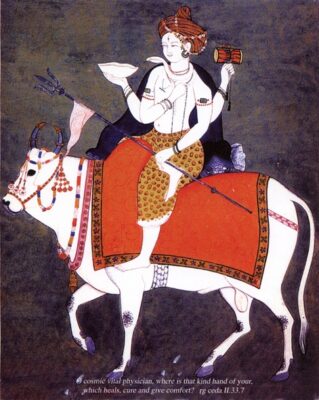 The Mahā-mṛtyuṅjaya mantra is formed when the Mahā-mṛtyuṅjaya bīja mantra comprising Sadāśiva and Mṛtyuṅjaya bīja is attached to the Mṛtyuṅjaya mantra along with the tri-loka vyāhṛti which is the very embodiment of Sāvitrī, the winner of Yama and the śaktī of the Savitur Gāyatrī.
The Mahā-mṛtyuṅjaya mantra is formed when the Mahā-mṛtyuṅjaya bīja mantra comprising Sadāśiva and Mṛtyuṅjaya bīja is attached to the Mṛtyuṅjaya mantra along with the tri-loka vyāhṛti which is the very embodiment of Sāvitrī, the winner of Yama and the śaktī of the Savitur Gāyatrī.
Mahā-mṛtyuṅjaya bīja mantra: ॐ हौं जुं सः॥ (om hauṁ juṁ saḥ)
Sāvitrī tri-loka vyāhṛti: ॐ भूर्भुव स्वः॥ (om bhūrbhuva svaḥ)
ॐ हौं जुं सः भूर्भुव स्वः॥
त्रयंबक्कं यजामहे सुगन्धिं पुष्टिवर्धनम्।
उर्वारुहमिव बन्धनान् मृत्योर्मूक्षीय मामृतात्॥
सः जुं हौं भूर्भुवस्वरों॥
om hauṁ juṁ saḥ bhūrbhuva svaḥ
trayaṁbakkaṁ yajāmahe sugandhiṁ puṣṭivardhanam,
urvāruhamiva bandhanān mṛtyormūkṣīya māmṛtāt.
saḥ juṁ hauṁ bhūrbhuvasvaroṁ||
Thereafter, perform Rudra-abhiśeka (Ritual offering of the Pañca-Amṛta or the five forms of nectar as Honey, Ghee, Curd, Milk and Water) on the Shiva liñga.
Dhyāna
Nyāsa (protection) and dhyāna (meditation) are to be performed before the japa and ritual.
चन्द्रार्काग्नि-विलोचनं स्मितमुखं पद्मद्वयान्तः स्ठितं
मुद्रापाक्ष-मृगाक्ष-सूत्र-विलसत् पाणिं हिमांशु प्रभाम्।
कोटिरेन्दु गलत्सुधा प्लुत तनुं हारादिषोज्ज्वलम्
कन्त्या विश्वविमोहनं पशुं-पतिं मृत्युञ्जयं भावयेत्॥
candrārkāgni-vilocanaṁ smitamukhaṁ padmadvayāntaḥ sṭhitaṁ
mudrāpākṣa-mṛgākṣa-sūtra-vilasat pāṇiṁ himāṁśu prabhām|
koṭirendu galatsudhā pluta tanuṁ hārādiṣojjvalam
kantyā viśvavimohanaṁ paśuṁ-patiṁ mṛtyuñjayaṁ bhāvayet||
Mahā-mantra Nyāsa
For the initiated, the mahā-mṛtyuñjaya mantra nyāsa is given below. Please note that the chandas changes and the names of all the Maharṣi have been included.
| वषिष्ठ कहोल वामदेव ऋषये नमः। शिरसि त्रिष्टुभ् छन्दसे नमः। मुखे श्री त्रयम्बक्केश्वर मृत्युन्जय देवतायै नमः। हृदि हौं जुं बीजय नमः। गुह्ये ह्रीं शक्तये नमः। पादयो |
vaṣiṣṭha kahola vāmadeva ṛṣaye namaḥ| śirasi triṣṭubh chandase namaḥ| mukhe śrī trayambakkeśvara mṛtyunjaya devatāyai namaḥ| hṛdi hauṁ juṁ bījaya namaḥ| guhye hrīṁ śaktaye namaḥ| pādayo |
Japa
Japa is the repetition of a mantra for a fixed number of times. Normally this is in multiples of 108. Based on the teachings of Harihara in Praśna Mārga, we advise that this mantra should be recited for 8000 times in a period of forty days. The recitation of 108 mantra for forty days both in the morning and evening covers this requirement. For other purposes larger number of repetitions are advised.
After lighting a lamp and sitting in any yogic posture (preferably padmāsana which is the picture of Lord Siva in the picture) while facing east. Recite the mahā-mantra 108 times (one rosary) or its multiples in each sitting. This is the greatest work of maharishi Vasiṣṭha. Before commencing the Mahā Mṛtyuñjaya mantra recite the mantra to the everlasting spirit of the maharṣi Vasiṣṭha for his blessings and guidance.
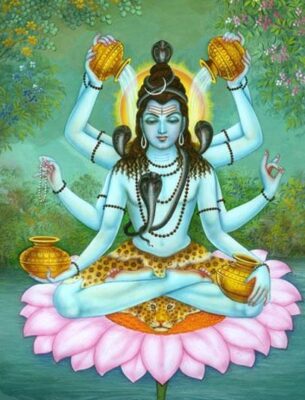
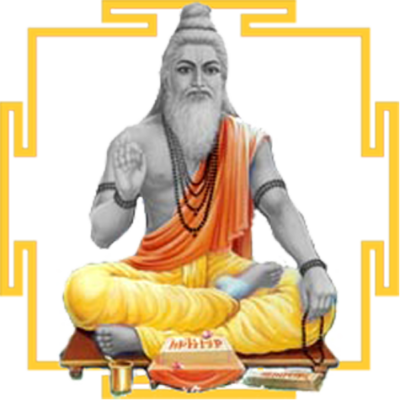
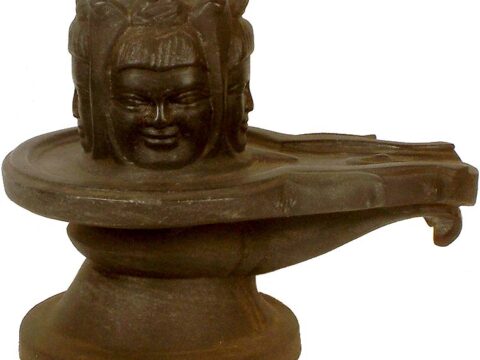
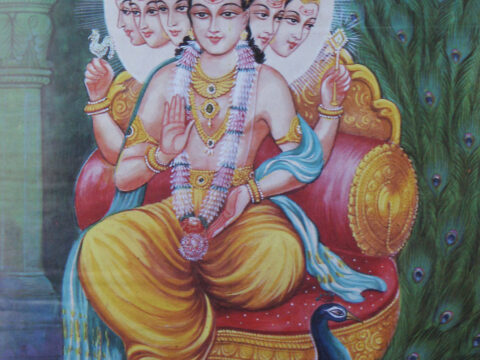
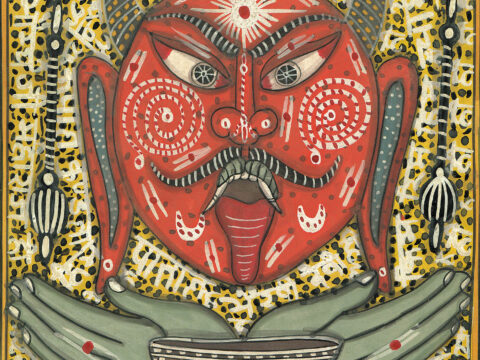
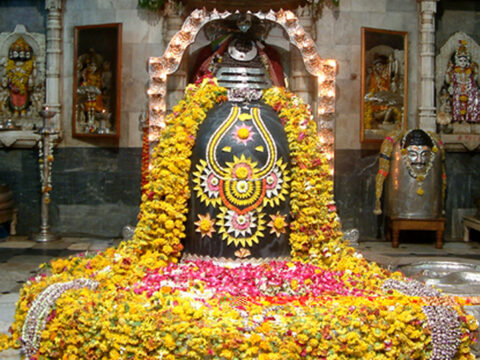
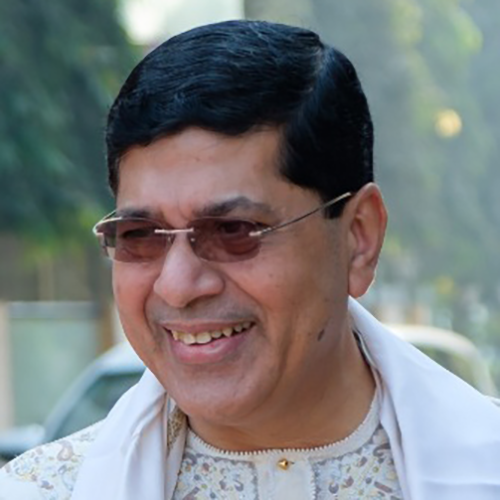
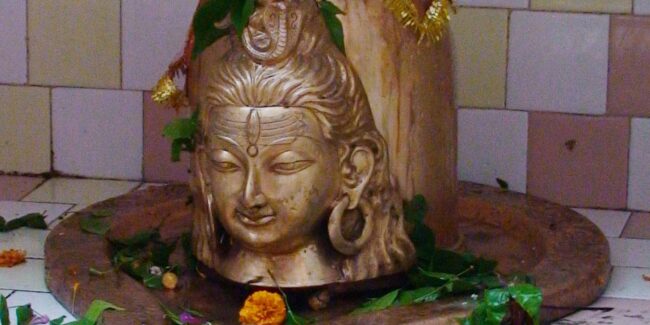
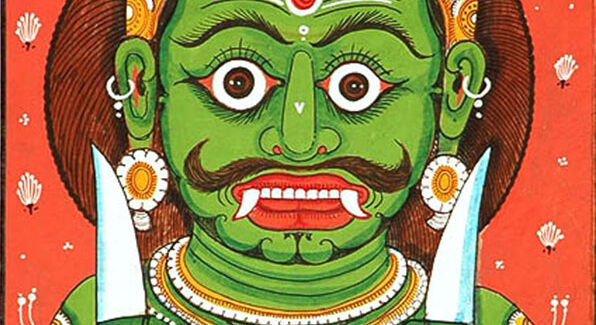
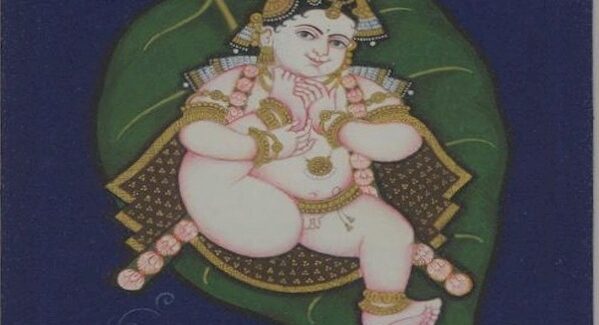
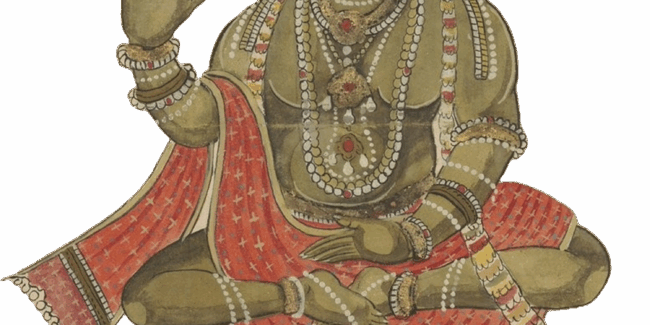
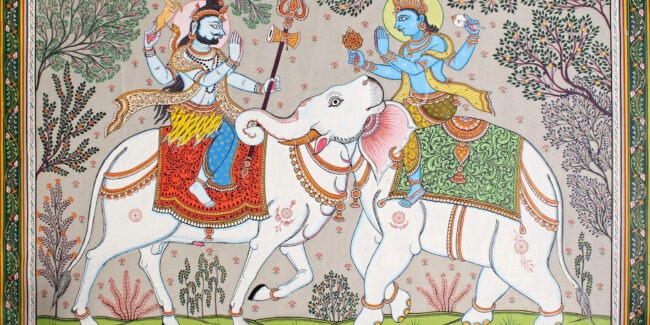
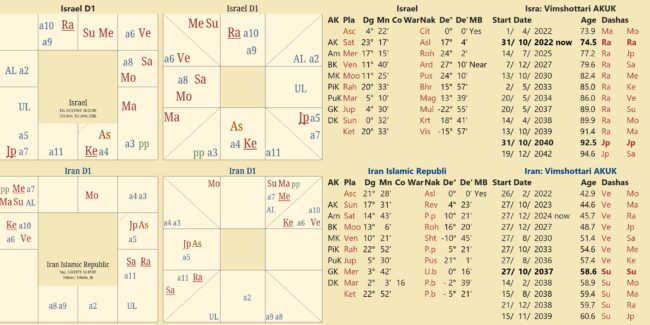
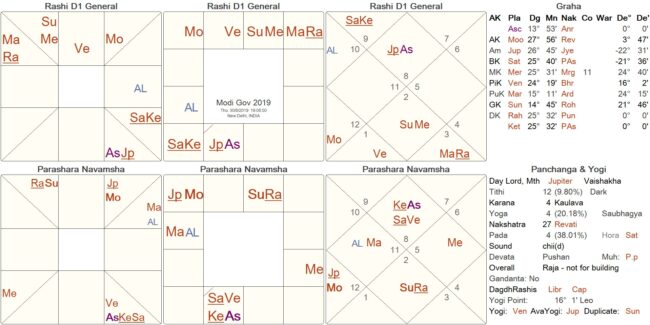
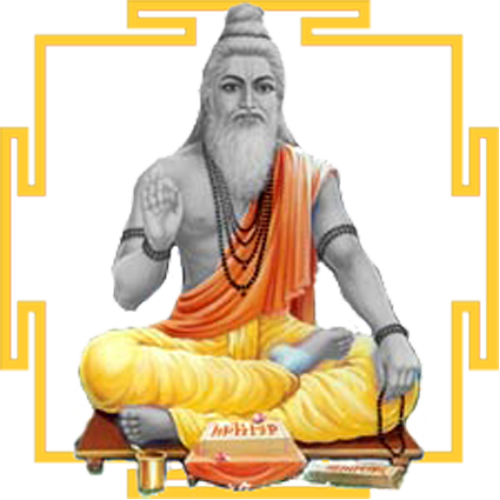 DBC offers online courses in jyotish (Vedic Astrology) taught directly by Sanjay Rath as per the tradition, through narrated power points and other audio tools. The courses are at different levels, from the beginners through the intermediate to the advanced and are known as SoHamsa | DBC courses, with individual classrooms and assistant teachers
DBC offers online courses in jyotish (Vedic Astrology) taught directly by Sanjay Rath as per the tradition, through narrated power points and other audio tools. The courses are at different levels, from the beginners through the intermediate to the advanced and are known as SoHamsa | DBC courses, with individual classrooms and assistant teachers
 Sagittarius Publications is the publisher and distributor the popular quaterly magazine the Jyotish Digest, as well as many thorough books on the subject of Vedic Astrology or Jyotish.
Sagittarius Publications is the publisher and distributor the popular quaterly magazine the Jyotish Digest, as well as many thorough books on the subject of Vedic Astrology or Jyotish.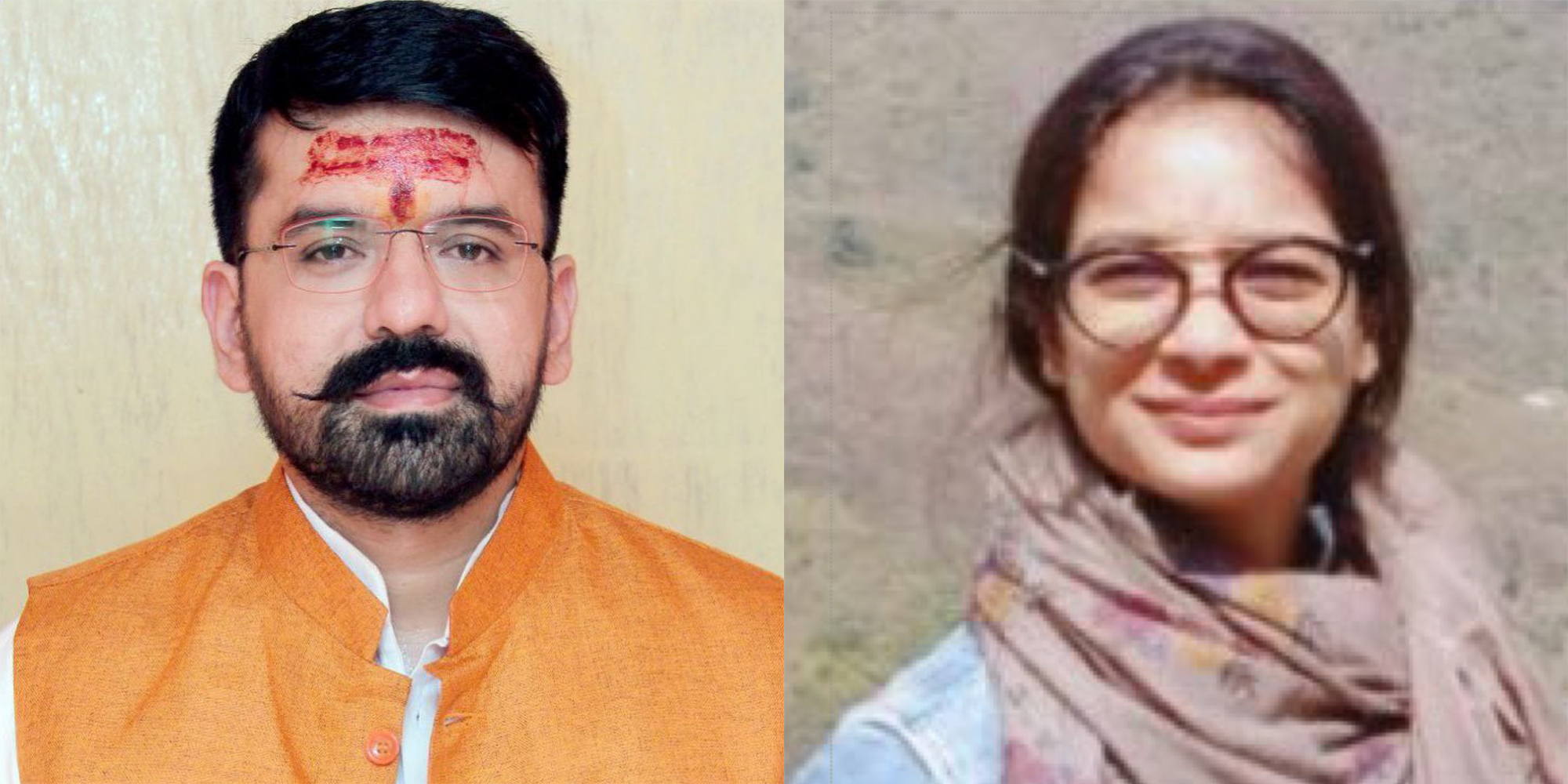 We have an excellent pandit Divākar ‘Deva’ Mishra, who is from the priests of Vindhyāvāsini Siddha Pīṭha to guide you through the hundreds of temples of Kāśi [Varanasi] and neighbouring regions. He can organise your pūjā, keep you safe and take care. He is supported by an English-speaking well-travelled spouse ‘Supriya Mishra’. Please contact them directly for any services, remedial pūjā and tours. They handled the 60+ member Kāśi Jyotiṣa Group 2022.
We have an excellent pandit Divākar ‘Deva’ Mishra, who is from the priests of Vindhyāvāsini Siddha Pīṭha to guide you through the hundreds of temples of Kāśi [Varanasi] and neighbouring regions. He can organise your pūjā, keep you safe and take care. He is supported by an English-speaking well-travelled spouse ‘Supriya Mishra’. Please contact them directly for any services, remedial pūjā and tours. They handled the 60+ member Kāśi Jyotiṣa Group 2022.
Dear Sanjay ji
I saw in one of your videos a pause is required (after repeating pranava) while repeating savitur Gayatri,in the same way is a pause required while repeating the samput as well (some mantra’s are samputita like Maha mrityunjaya mantra,while some bijas are samputita within a mantra like Shakti ganapati mantra given in your book).
Is there any difference between जुं and जूं please clarify
Regards
Karthik.
Here the ॐ जुं are treated as bija and therefore no pause.
We are actually doing ओं and not ॐ in these mantra. diksha prakasana specifically mentions that this ओं or औं is the manner to recite mantras when om is in beginning.
the difference is in the U-kara,
1. harsha U-kara is damana जुं and supresses the jivatman, forcing it to stay in the body for some more time
2. dirgha U-kara is maarana जूं and beats the jivatman, this is absolutely bad
Master Sanjay Rath ,
Right now Jupiter and Saturn are closest to the planet Earth.
Jupiter was closest to Earth on July 15 , 2020 10:00 UTC.
Saturn will be closest to Earth on July 21 , 2020 03:00 UTC.
Which particular mantra(mantras) would you recommend?
Thank you.
BT Tay
17-7-2020 19:50:34
Right now >> Durga/Kali >>fight COVID
Yes wonderful . Now for covid-19 is there a way of using the Maha Mrtyunjaya Mantra ?
Thank you.
Pranam Guruji,
Why the channda for Mahamrityunjaya mantra changes to Tristubh i.e. 44 syllables. When I count I get 8 + 16 + 16 + 8 = 48 syllables in Jagati. Obviously I’m not very well versed with Mantra shashtra so making some mistake in understanding . However would appreciate if you clarify in this forum for the benefit of every one.
Jai Jagnnath
Suraj
Mrityunjaya is anustubh 8+8+8+8
In one form Mahamrityunjaya adds bija as samputa and in another it is interspersed with Gayatri Mantra
tra-1 yaM-2 ba-3 kaM-4 ya-5 jaa-6 ma-7 he-8 su-1 gan-2 dhiM-3 puS-4 Ti-5 var-6 dha-7 naM-8
ur-1 vaa-2 ru-3 ka-4 mi-5 va-6 ban-7 dha-8 naan-9 mri-1 tyor-2 mu-3 xii-4 ya-5 maam-6 mR^i-7 taat-8
त्र-१ यं-२ ब-३ कं-४ य-५ जा-६ म-७ हे-८ सु-१ गन्-२ धिं-३ पुष्-४ टि-५ वर्-६ ध-७ नं-८
उर्-१ वा-२ रु-३ क-४ मि-५ व-६ बन्-७ ध-८ नान्-९ म्रि-१ त्योर्-२ मु-३ क्षी-४ य-५ माम्-६ मृ-७ तात्-८
tra-1 yaṁ-2 ba-3 kaṁ-4 ya-5 jā-6 ma-7 he-8 su-1 gan-2 dhiṁ-3 puṣ-4 ṭi-5 var-6 dha-7 naṁ-8
ur-1 vā-2 ru-3 ka-4 mi-5 va-6 ban-7 dha-8 nān-9 mri-1 tyor-2 mu-3 kṣī-4 ya-5 mām-6 mṛ-7 tāt-8
|| Om Gurave Namah ||
Dear Guruji there is 1 akshara more in 3 pada, can we convert the bandanaan to bandaan?
Regards,
Sanjay P
The original taught to me had र्मोक्ष्य (2) instead of र्मुक्षीय (3) rendering the perfect anustubh cchandas. Thats what I personally do even today and will continue. Here is the Mrityunjaya mantra
त्र्यम्बकं यजामहे सुगन्धिं पुष्टिवर्धनम्।
उर्वारुकमिवबन्धनान् मृत्योर्मोक्ष्य मामृतात्॥७।५९।१२
tryambakaṁ yajāmahe sugandhiṁ puṣṭivardhanam|
urvārukamivabandhanān mṛtyormokṣya māmṛtāt||7|59|12
Jai Somnath Gurujee,
There are many different versions of MMM. What is the difference? How to choose which one is right for one?
Is this version correct?
ॐ हौ जूँ सः
ॐ भूर्भुवः स्वः
ॐ त्रयंबकं यजामहे सुगन्धिम् पुष्टिवधर्नम्
उर्वारूकमिव बन्धनान्मृत्यॊर्मुक्षीय मामृतात्
ॐ स्वः भुवः भूः ॐ
सः जूँ हौ ॐ
Warmest regards
Yugesh
You cannot reverse the bija within the bija mantras
There are three different types of Mrityunjaya and Gayatri combo which create Mahamrityunjaya
Dear Sanjay ji
Thank you for the reply. I take that this article on the web is showing the right mantra. One more question, what is the origin (sastra source) for the Om Krishna Guru Mantra? It is a great Sei Vyasa Mantra but wanted the sastric source. Thanks in advance.
Dear Sanjay ji
From your book VRA the Sanjivani Mantra ends with Bhur Bhuva Svarom Jum Sah Haum Om, however the mantra in the above article does not end with the samputita but with Sah Jum Haum BhurBhuvaSvarom. Are these distinct in their application for remedies or is the one in VRA wrong? Many thanks in advance.
Sri
Too many such typos in that book need revision. Never had computer when I wrote that book. old type setting system
Jai Jagannath dear Sanjay jee, just to confirm in the above given MMM its उर्वारुहमिव (urvāruhamiva ) and not urvarukamiv?
And to do this process one need to be initiated or any one can do it?
Thank you so much for giving such amazing information.
Jai Krishna
Jai Somanath
Yugesh
The translation mistake people make is for that particular word. They translate the word urvaaruha instead of urvaaruka
Correct word is urvaaruka
Urvaaruha means leaping up , mounting , ascending … like a creeper. This has NOT been used in the Rk Veda. What is used is Urvaaruka which means “deadly disease”
Thank you for your quick reply, no i m not interested for any siddhi…just for spiritual uplift of soul, is it fine to recite d mantra in d form it is widely prevalent, specifically om namah shivay , Mmm, and gaytri mantra .thank u very much.
om namah (h is visarga) shivaaya (spell the ya fully) like this ॐ नमः शिवाय (om namaḥ śivāya)
gayatri yes without vyahrti i.e. without ‘bhur-bhua-svah’ unless initiated. like this
ॐ तत् सवितुर्वरेण्यं भर्गो देवस्य धीमहि।
धियो यो नः प्रचोदयात्॥३।६२।१०
om tat saviturvareṇyaṁ bhargo devasya dhīmahi|
dhiyo yo naḥ pracodayāt||3|62|10
Guruji sadar pranam, Thank you for your spiritual columns, ther are very helpful for those who seeking knowledge from our ancient scriptures, further for MMM recitation does anyone need to apply bandh as well, is it a myth? I heard that maha mrityunjay mantra is helpful only when chanted with …Om haum jun sawha…plz guide.
Problem with the vyahriti’s is that they need to be initiated. Gayatri initiaiton is also required for Maha-Mrtyunjaya
If the purpose is protection, Maharsi Vasistha is the most powerful of the sages for this. The simple anustubh mantra from the Rgveda will go.
Just do Rishi nyasa for siddhi if you are interested